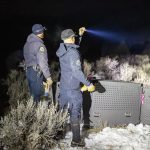The Optimist: (Re)priorities

Courtesy photo
All human systems develop inertia. Like a snowball rolling downhill, our systems gather more snow until the original shape becomes hard to discern. Whether it’s a business, a government, or a university, we rarely go back to first principles to take a fresh look at a system, problem, or budget. We rarely ask, “Why is that so?”
Our local governments tend to be trapped by past decisions and prior assumptions in setting priorities. We recently observed an example in the city of Aspen. Last week, the School District asked Aspen to support an increase in the city sales tax that helps fund our schools. The Aspen education sales tax would go from 0.3% to 0.6% to help close the budget gap created when the state of Colorado changed education funding rules. Because our community has high property values, the state takes our income tax dollars and sends them to other communities for education. In turn, our community must fund public schools without any state contribution, Colorado’s version of Taxation without Education.
An increase of 0.3% in the existing city of Aspen education sales tax would go a long way to close the gap that the state created. Council feared that this sales tax increase, along with two others that could be on the November ballot, would do great harm by increasing the total sales tax from 9.3% to 10.35%. Maybe.
But it is important to understand the financial context around this reaction. If a small increase in the sales tax is unattractive, Aspen can easily find the funds for education (and fire protection) elsewhere in its ample $211 million budget, a sizable snowball. For context, the city of Aspen spends $40 million per year on open space and recreation. The Aspen sales tax for open space is five times the sales tax for public education – 1.5% versus 0.3%. Right now, Aspen is in the final stages of authorizing a $250 million contribution to the Lumberyard Project for affordable housing. It will need to issue $70 million in new bonds and exhaust nearly all of its affordable housing funds for that project. A private developer named Gorman will put up another $110 million in capital and will develop and operate the project, receiving the rent from tenants. To summarize, the city will contribute the land via a ground lease, plus $250 million, for one affordable housing project. The community will receive approximately 300 rent-controlled housing units in return.
For more context, several weeks ago, Aspen Council quickly authorized the donation of $3 million to two mobile home parks in Basalt and Carbondale. This was a kind, empathetic move to help two neighboring communities that house approximately 450 residents. I do not question the value of kindness, nor the spirit of assisting others in the greater Roaring Fork Valley.
However, these moves belie the idea that Aspen cannot find $4 million to $6 million to help fund our public schools, which have been harmed by the State of Colorado. Our school district is home to 1500 local kids. It is the heart of our community. Currently, the school district receives about 2% of the Aspen’s annual budget. Is education really only a 2% priority for Aspen? Open space receives 10 times the amount our schools receive from the city, about 20% of total budget. I love our open space and recreation opportunities, but they would be hollow without local kids to love them too.
To roll up the snowball of priorities, Aspen readily gifts $3 million to do a nice thing for two mobile home parks in neighboring communities. We do not wring our hands about contributing $250 million to an affordable housing project with 300 new rental units. We move eagerly to spend $40 million to $50 million to turn the Armory into a food hall with three food stalls, a bar, and community gathering spaces. These are all interesting projects that merit consideration. But how many citizens would prioritize those investments over allocating an additional $4 million to $6 million each year to protect education for the 1,500 children in our community?
Aspen has many ways to find the money if we fear a 0.3% increase in sales tax for schools (and a 1.0% total increase if we include other potential increases for fire protection and childcare). The sales tax is an excellent mechanism, as it sources funds from visitors, not just residents. Another good mechanism is the Arts Fund, supported by the Real Estate Transfer Tax, which could offset the $1 million cost of arts programming and improvements to the District Theater. There are countless other ways for Aspen (and Snowmass and Pitkin County) to source funds required to protect our schools. But we cannot claim poverty when we toss $250 million here, $40 million there, and $3 million over there. Together, Aspen, Snowmass, and Pitkin County spend $600 million annually. Our community can find the money for our schools. We can also spread the costs so no one government or segment of taxpayer bears more than a small share.
In 2025, our local leaders have a path to protect our schools for the next several decades. Protecting our schools would benefit from a cooperative effort between the School District and Aspen, Snowmass, and Pitkin County. Of all local challenges, this one is the simplest and fastest problem to solve. It requires the equivalent of pennies for governments that can rapidly find budget to make a $3 million donation to a neighboring community or to fund a $360 million housing project. With focus now, our leaders can catch this snowball before it becomes an avalanche that covers our schools.









